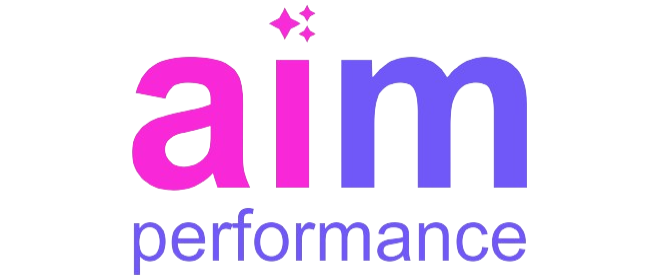Performance management is crucial for ensuring that employees across all levels and roles are meeting organizational goals. The diverse nature of the workforce, including white collar, grey collar, and blue collar employees, requires tailored approaches to performance evaluation. This blog will explore how rating, scoring, title, and grade are instrumental in managing and enhancing performance across these distinct categories of Workforce
Understanding the Workforce: White, Grey, and Blue Collar
White Collar Workforce
White collar workforce typically engage in administrative, managerial, or professional roles. Their performance is often evaluated based on intellectual and strategic contributions. Utilizing a structured system of rating and scoring helps in identifying areas of excellence and improvement.
Grey Collar Workforce
Grey collar workforce perform tasks that combine elements of both white and blue collar jobs. They often work in fields like healthcare, where both manual skills and professional knowledge are required. Performance management for grey collar workforce must balance technical proficiency and interpersonal skills.
Blue Collar Workforce
Blue collar workforce are involved in manual labor and skilled trades. Their performance is usually assessed based on productivity, quality of work, and adherence to safety protocols. Clear grading and title assignments are essential to recognize their contributions and motivate continuous improvement.
The Role of Rating in Performance Management
Establishing Clear Expectations
Implementing a rating system in performance management provides clear benchmarks for employee expectations. By setting defined criteria, employees understand what is required to excel in their roles. This transparency is beneficial for all collar types, ensuring consistency and fairness in evaluations.
Facilitating Feedback and Development
Ratings offer a structured way to provide feedback. Regular performance reviews that incorporate rating scales help employees recognize their strengths and areas needing improvement. For white collar workforce, this might focus on strategic thinking and leadership, while for the grey and blue collar workforce, practical skills and efficiency might be highlighted.
Scoring Systems: Quantifying Performance
Objective Measurement
Scoring systems allow for quantifiable assessments of employee performance. By assigning numerical values to different performance indicators, organizations can objectively compare employee performance across different roles and departments. This objectivity is crucial in eliminating biases and ensuring fair evaluations.
Enhancing Motivation
When employees understand that their performance is being scored, it can drive them to achieve higher standards. Clear scoring criteria encourage workforce to focus on specific goals, fostering a competitive yet collaborative work environment. This approach is effective for motivating both individual contributors and team members.
Titles and Their Impact on Performance
Recognizing Achievements
Assigning titles is a powerful way to recognize employee achievements. Titles such as “Senior Analyst,” “Lead Technician,” or “Master Craftsman” signify a level of expertise and dedication. These titles not only boost morale but also inspire other employees to strive for similar recognition.
Defining Roles and Responsibilities
Titles help in clearly defining roles and responsibilities within an organization. For white collar workforce, titles often reflect the hierarchy and the level of decision-making authority. In grey and blue collar roles, titles can indicate skill levels and specializations, ensuring that the right personnel are assigned to the right tasks.
The Importance of Grading
Standardizing Evaluations
Grading systems standardize performance evaluations, ensuring consistency across the organization. By categorizing performance into grades such as “Exceeds Expectations,” “Meets Expectations,” or “Needs Improvement,” managers can provide clear and actionable feedback to employees.
Supporting Career Development
Grading not only assesses current performance but also aids in career development. Employees who consistently achieve high grades can be identified for promotions and additional responsibilities. This structured approach to career progression is essential for maintaining a motivated and ambitious workforce.
Tailoring Performance Management to Each Collar Type
White Collar Strategies
For white collar workforce, performance management should focus on intellectual growth and leadership skills. Implementing advanced rating and scoring systems can help identify potential leaders and innovators within the organization.
Grey Collar Approaches
Grey collar workforce benefit from a balanced performance management approach that evaluates both technical skills and interpersonal abilities. Titles and grades can be particularly effective in recognizing their multifaceted contributions.
Blue Collar Techniques
Performance management for blue collar workforce should prioritize productivity and safety. Scoring systems that measure output and adherence to safety protocols, along with titles that recognize skill levels, are crucial for maintaining high standards.
Integrating Technology in Performance Management
Automated Rating and Scoring Tools
Modern performance management systems leverage technology to automate rating and scoring. These tools provide real-time data and analytics, allowing managers to make informed decisions quickly. Automated systems also reduce the administrative burden on HR departments.
Digital Platforms for Feedback
Digital platforms facilitate continuous feedback, enabling employees to receive timely and constructive insights into their performance. This immediate feedback loop is particularly beneficial for dynamic work environments where quick adjustments are necessary.
Challenges and Solutions in Performance Management
Addressing Bias
One of the challenges in performance management is addressing potential biases. Objective scoring systems and standardized grading criteria help mitigate biases, ensuring fair and equitable evaluations for all employees, regardless of their collar type.
Ensuring Transparency
Transparency in performance management processes builds trust between employees and management. Clear communication about the criteria and methods used in rating, scoring, and grading is essential for maintaining a transparent and supportive work environment.
The Future of Performance Management
Evolving Practices
Performance management practices are continually evolving to meet the changing needs of the workforce. Incorporating employee feedback into the design of rating and scoring systems ensures that these tools remain relevant and effective.
Fostering a Culture of Continuous Improvement
Ultimately, the goal of performance management is to foster a culture of continuous improvement. By using rating, scoring, titles, and grades effectively, organizations can support their employees’ growth and development, leading to sustained success and innovation.
Conclusion
Effective performance management optimizes the contributions of white collar, grey collar, and blue collar workforce. Comprehensive systems of rating, scoring, titles, and grades ensure fair and motivating evaluations. These tools recognize and reward achievements, guide employees in their professional development, and drive the overall success of the organization.










